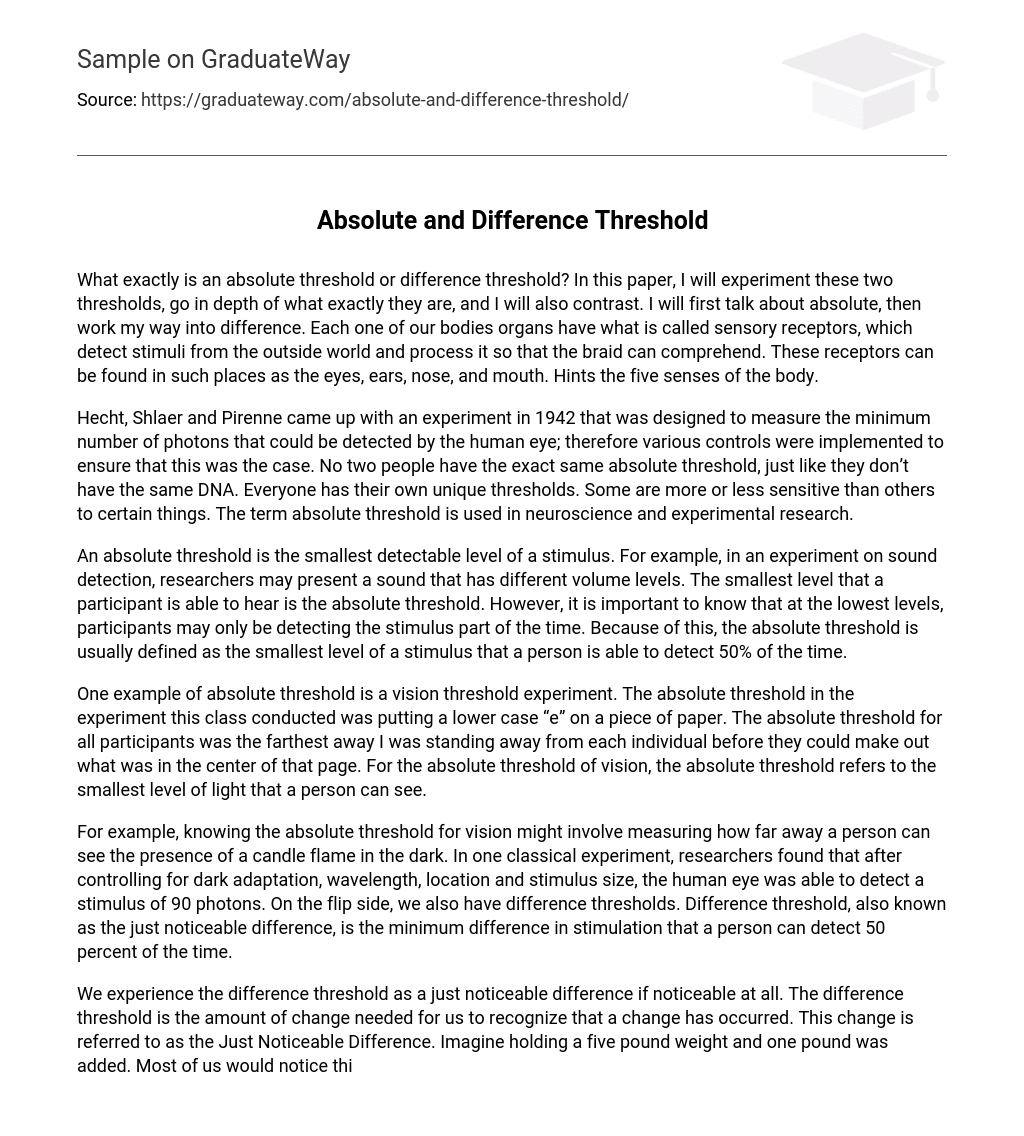This paper will examine and compare the ideas of absolute threshold and difference threshold. Absolute threshold is the lowest level of stimulus that our sensory receptors in organs like the eyes, ears, nose, and mouth can detect. These receptors are vital in detecting stimuli from the external environment and sending them to the brain for processing.
The minimum number of photons detectable by the human eye was determined in 1942 through an experiment conducted by Hecht, Shlaer, and Pirenne. To ensure accurate results, various controls were included in the experiment. Similar to unique DNA, each individual possesses their own distinct absolute threshold. Sensitivity to different stimuli may vary among individuals. In neuroscience and experimental research, the term “absolute threshold” is frequently utilized.
The absolute threshold is the minimum detectable level of a stimulus. In sound detection experiments, researchers use different volume levels to determine the smallest level participants can hear. This is known as the absolute threshold. Importantly, participants may only detect the stimulus at the lowest levels intermittently. Hence, the absolute threshold is typically defined as the lowest stimulus level that a person can detect 50% of the time.
One instance of absolute threshold can be seen in a vision threshold experiment. In this experiment, our class set the absolute threshold as being able to distinguish a lowercase “e” on a piece of paper. The absolute threshold for all participants was determined by the distance at which I stood before they could clearly perceive what was in the center of that page. Regarding vision’s absolute threshold, it pertains to the minimum level of light that a person can perceive.
For instance, the absolute threshold for vision can be determined by observing how far away an individual can perceive a candle flame in the absence of light. In a well-known research study, scientists discovered that, after accounting for factors such as dark adaptation, wavelength, location, and stimulus size, the human eye could detect a stimulus consisting of 90 photons. Conversely, there are also difference thresholds. The difference threshold, or just noticeable difference, refers to the smallest difference in stimulation that a person can detect half of the time.
The just noticeable difference is the amount of change needed for us to perceive a difference if noticeable at all. It represents the change threshold, or the minimum amount of change required for us to recognize a difference. This concept can be illustrated by considering the example of holding a five pound weight and adding one pound. For most people, this difference would be noticeable. However, if we were holding a fifty pound weight, adding another pound may not be noticeable to many of us. This is because the change required to perceive a difference must be relative to the initial weight.
German scientist Ernst Weber developed a concept known as Weber’s Law, which states that increasing weight by one pound would result in a 20% weight gain in the first case. However, in the second case, the same increase in weight would only add an additional 2%. Weber’s Law specifically studies the difference threshold and proposes that the change required to detect a difference is equal to a constant fraction or proportion of the original stimulus.





